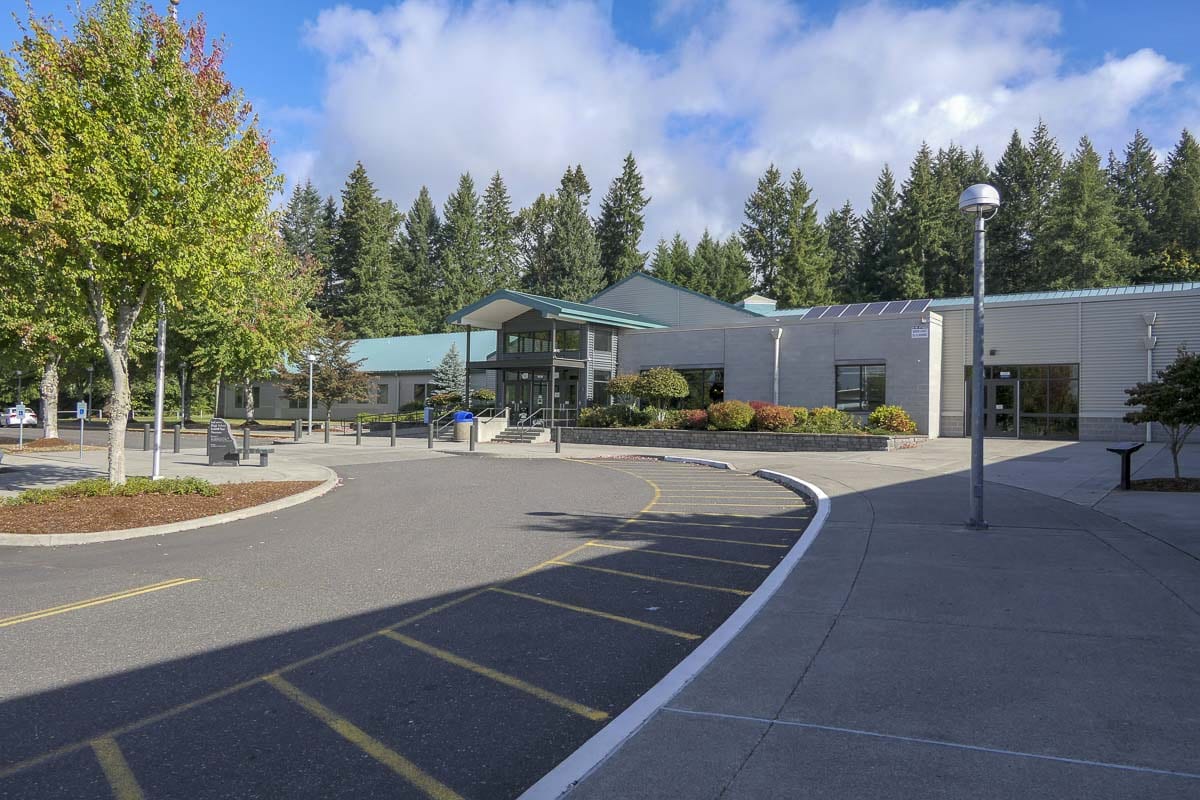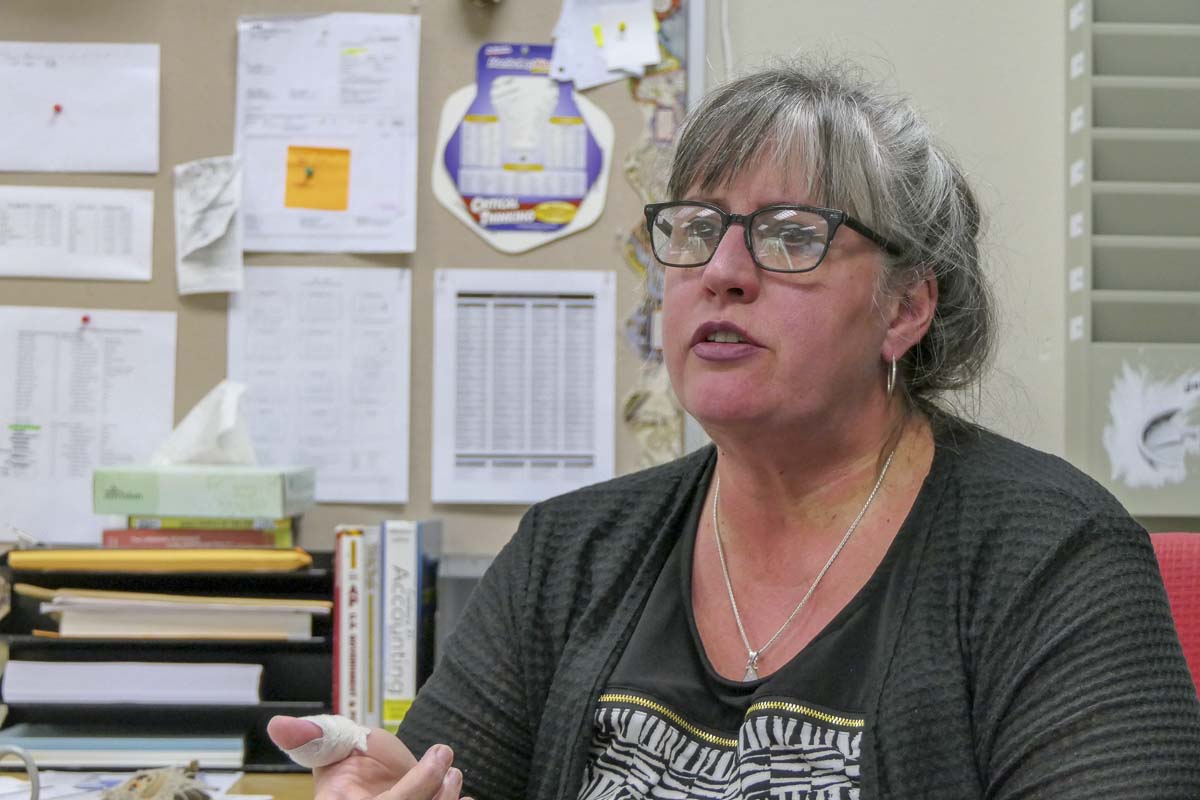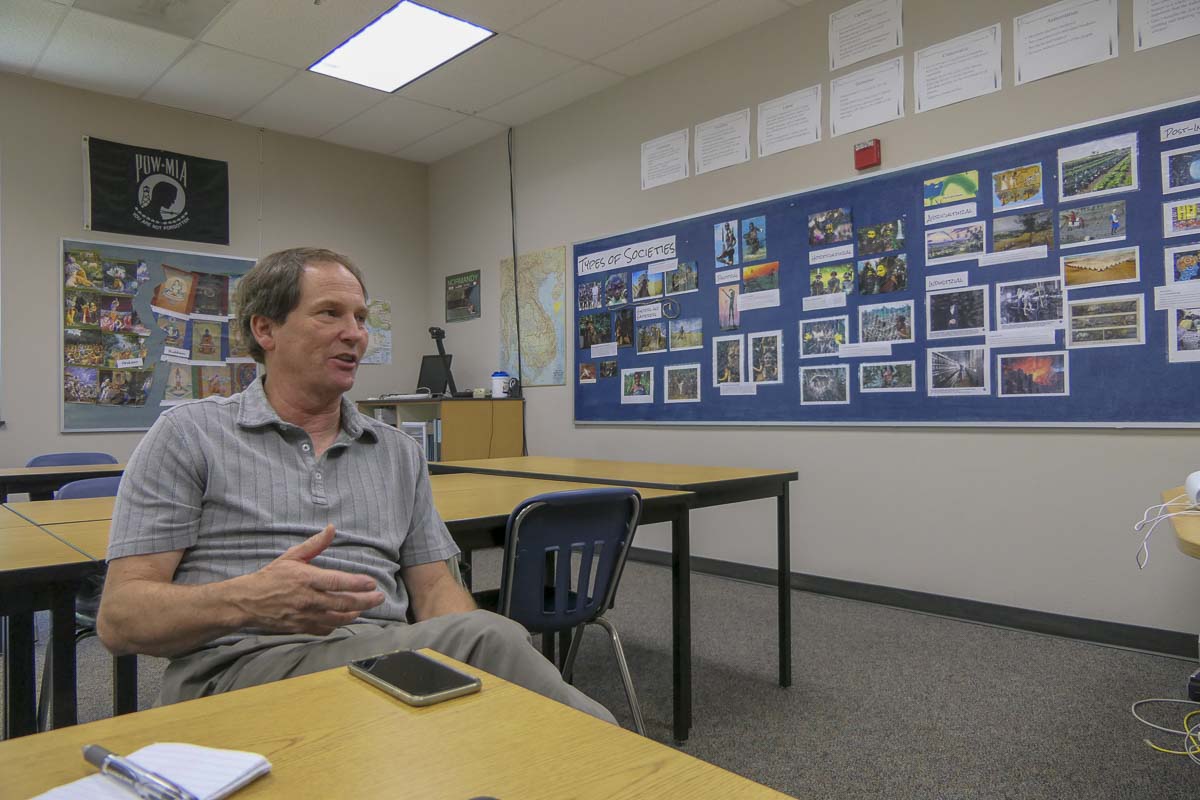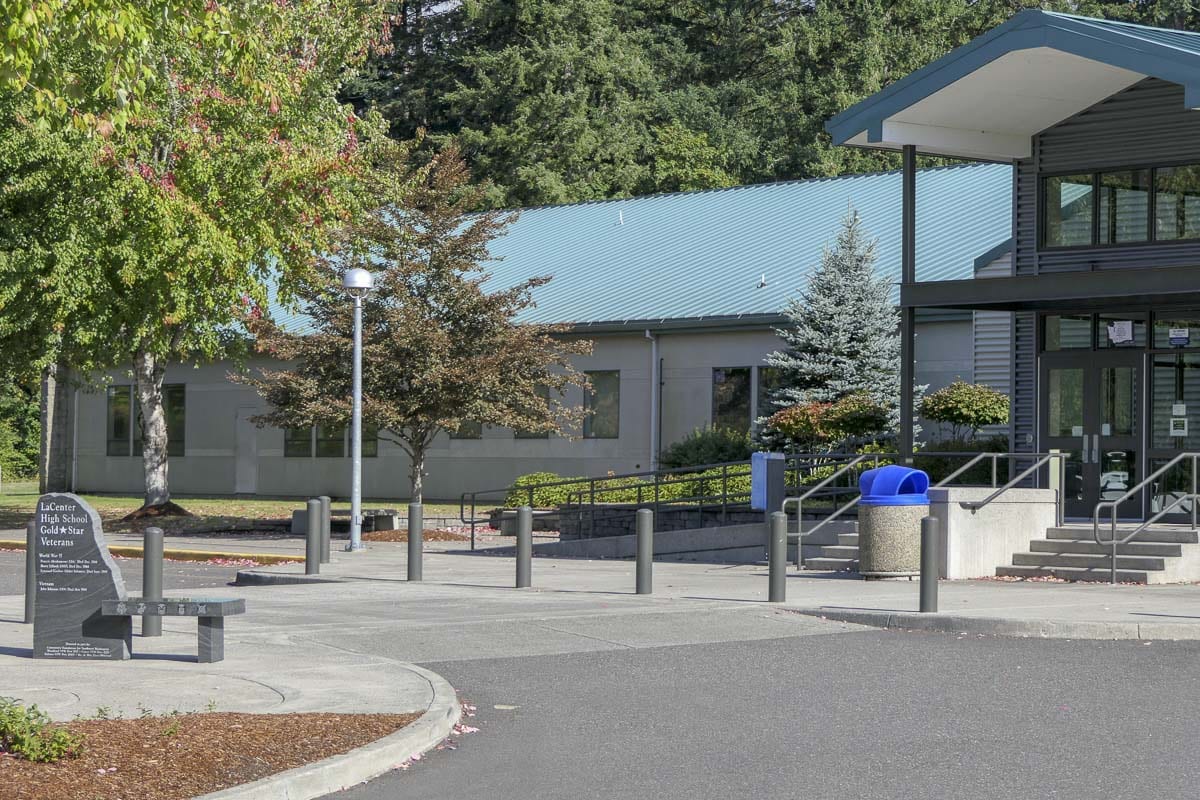‘The rich have gotten richer, and the poor have gotten poorer,’ says La Center Superintendent Dave Holmes
LA CENTER — When the 2018 version of the Washington State Legislature wrapped up a second overtime session on March 8, it had agreed to provide an additional $1 billion in funding for basic education. In June, the state Supreme Court decided that, after six years of being in contempt of the McCleary verdict, the state had finally fulfilled its constitutional obligation to fully fund basic education.
The news was heralded as a new era for basic education in the state, and a major victory for educators. The Washington Education Association (WEA) told its local unions across the state to expect a 15-percent raise. Despite the optimism, worries were already bubbling up about labor unrest before the new school year.

Ultimately, the school year in dozens of school districts across the state was delayed as teachers went on strike. It was the most widespread teacher strike in Washington state since 1983, and nearly every Clark County school district was involved. Battle Ground ultimately lost 12 days from its school calendar with teachers holding out, even voting to defy a court order to return to class before a last-minute deal was ultimately reached.
One Clark County district that did not vote to strike was La Center, where teachers quietly approved a 7.3-percent raise. That doesn’t mean they were happy about it says La Center Education Association President Kathy Bounds, a social studies teacher at the high school.
“I lost sleep. I didn’t know if I was doing the right thing. Still, it’s emotional for me,” says Bounds, fighting back tears. “But what would we strike for? A day or two? There wasn’t this million extra dollars if we had this staff mix factor. We’re punished because we’re experienced and have years behind us.”
Bounds and La Center School District Superintendent Dave Holmes sat down together with ClarkCountyToday.com in the hopes of shedding light on major issues they see with the education funding package the state ultimately approved.
“We were losers in both situations,” Holmes added, “and we’re even a bigger loser in the new funding model than we were in the old funding model.”
“We’re one of these few districts in the McCleary deal to where the state underfunded our salaries to begin with,” says Bounds.
One of the biggest issues for a district like La Center is the decision to do away with salary schedules at the state level in favor of an average. While the legislature set a minimum starting salary for new teachers, it is now funding districts based on a statewide average, with some money added depending on the cost of living, known as regionalization. For most Clark County districts that added 6 percent (12 for Camas), brought the average to just over $69,000 per teacher.
The issue that brings up for a district like La Center is that they already have a majority of teachers at the top end of the earning scale. That means their staff mix (how districts rank the seniority of their teaching staff) is much higher than many other districts in the area, and their teachers were, on average, already earning more than the statewide average.
“Under the previous model, which took staff mix into account, Holmes says the state would have been giving them around $73,000 per teacher, compared to the $69,129 they’re getting under the current model.
We didn’t get enough money to pay our salary, because so many of us were in this top salary range,” says Bounds.

Holmes says that left them scrambling to find an additional $600,000 just to give their teachers the raises they did get. Even so, their salary range is now much lower than most surrounding districts, raising the fear that their highly skilled teachers could start looking elsewhere.
“I don’t think they’re all going to leave,” says Bounds, “but boy there’s incentive to.”
Part of that incentive is that a teacher’s retirement pension is based on the last few years of earnings, meaning moving to a higher-paying district in the five years before retirement can make a big difference in monthly earnings for the rest of their life.
But is there incentive on the side of local school districts, under the new funding model, to actually hire those skilled educators?
“This is an age discrimination lawsuit waiting to happen statewide,” says Holmes.
The logic goes like this: “If I’m a superintendent and I’ve got a budget, and I’ve got an open position in History, and I’ve got a pile of applications for that, and I know that I can’t meet my budget, who am I going to hire?” Holmes asks.
“I’m getting the same $69,000 from the state no matter who I hire,” he continues, “and if I hire the person who has a BA and, let’s say, 15 credits and three years of experience, that person costs me $50,000. And if I hire Kathy, it’s going to cost me $98,000.”
Holmes was speaking hypothetically as if he were the superintendent of another district. In La Center the new top end is short of $90,000.
The next major issue is the levy cap coming next year.
The legislature’s intent in the McCleary fix was not simply to pass more money along to teachers, but to end the long-running practice of using local levy dollars to increase teacher compensation. While technically not allowed under state law, districts had found ways to boost compensation with operating levies, usually through Time, Responsibility and Incentive (TRI) pay.
To fund the $8.3 billion in education funding coming from the state, legislators increased the statewide property tax. To offset that, they put a cap on local levies at $2,500 per student or $1.50 per $1,000 of assessed property value, whichever is less.
In La Center, the local levy rate was $2.84 per $1,000 of assessed value. In Battle Ground the rate was $3.46 per $1,000. But, says Holmes, districts with high property values, like Everett or Shoreline, were already well below the new $1.50 threshold.
“Everybody in Puget Sound that was under a buck-fifty is still under a buck-fifty, but has the ability to go to a buck-fifty if they want,” says Holmes. “The rich have gotten richer, and the poor have gotten poorer.”

Meanwhile, both La Center and Battle Ground will see levy funding cut by nearly half by 2019-2020.
The third factor affecting some districts is regionalization — the percent above the per-teacher funding provided by the state that districts receive based off cost of living in the district. Kelso, for instance, received no regionalization increase, while Camas saw 12 percent more. Every other district in Clark County got a six percent bump, while some Seattle-area schools received up to 24 percent more per teacher.
“That’s how dumb this is, right?” says Holmes. “Your school district is on that side of the Lewis River — your teachers all still live in Vancouver, but you get six percent less than I get because I’m on this side of the river, and my teachers all live in Vancouver.”
The perfect is the enemy of the good
The additional funding for K-12 education came at the end of the first special session of the 2018 legislature in the state’s supplemental budget, but lawmakers weren’t done tweaking the formula yet. Senator Lisa Wellman introduced SB 6362, which passed at the end of the second special session on a party line vote.
“When we passed the McCleary Fix bill in 2017 we knew there were some things we needed to work on,” says 18th District Sen. Ann Rivers of La Center. “By the time 2018 and the Democrat majority took over, it completely spun out of control, and all of the good work that we did — the stop gaps in 2242 — were summarily erased.”
Rivers says the bipartisan HB 2242 included caps on raises in the first year of the deal, and prohibited teachers currently under contract from negotiating a new deal. It also attempted to more clearly define where new money was intended to go, including towards certain educational programs.
“Then with the Lisa Wellman bill all of that was removed,” says Rivers. “Now what’s happening is all the programmatic money is going to be shifted over to the adults instead of the kids.”
In arguments prior to the final vote on her bill, even Senator Wellman admitted it wasn’t perfect, and that lawmakers would likely be back in 2019 making further adjustments. But, she said, sometimes “the perfect is the enemy of the good.”
Republicans said they had a bipartisan fix that they believed could be implemented, but accused Democrats of ramrodding the Wellman bill through without giving them time to either read it fully, or get their bill to the floor.
“The reality is, Republicans are in the minority, and there’s very little that we’re going to be able to do to stop the freight train,” says Rivers.

Janus decision driving teacher strikes?
But Rivers goes a step further, saying she thinks widespread teacher strikes were inevitable.
“We began to hear last February that, whether they got what they wanted or not, they were going to strike, and true enough they did,” Rivers says. “Even though the Democrats gave them everything they wanted, which removed all the language about who can bargain, removed the 3.1 percent cap, added in a bunch of money that created the situation where school districts would have unsustainable budgets.”
Rivers is among a group of lawmakers, including outgoing Camas Republican Rep. Liz Pike, who believe that some of the motivation for this year’s labor unrest is being driven by another Supreme Court decision at the national level.
Earlier this year the US Supreme Court ruled in the case of Janus v. AFSCME, agreeing with Mark Janus of Illinois that compelling public employees to pay union dues represented a violation of their First Amendment right. The ruling essentially means that teachers can now decline to pay union dues, and yet still receive the benefit of collective bargaining agreements.
Rivers accuses the WEA of publicizing settlements using faulty data. For instance, Kelso and Woodland seemed as if they got raises of over 20 percent. In fact, much of that increase came from moving TRI pay into the base salary.
“They said they got 22 percent for one district, but what they did was just included the TRI Pay that had always been in the paycheck,” says Rivers. “So it was a gimmick to make it look like they had gotten these really large pay increases, but it wasn’t the 22 percent that was advertised.”
In some cases, WEA seemed to not be including settlements of less than 20 percent on a map they had posted for districts currently negotiating new contracts.
“I would say that, for a significant number of teachers, the union just signed their pink slip,” says Rivers. “Because the only way that a school district can get out of this, unless there’s significant new funding from the state, is to fire teachers.”
Rivers, a former middle school math and science teacher, says she asked one union rep for their thoughts about the teachers who might be laid off as a result of the new raises they were pushing for.
“’Once they’re not employed, they’re not my problem anymore.’” Rivers claims she was told. “When I was a teacher I paid my dues because I thought they were going to keep me employed.”
Prototypical model falling short
The third problem that districts claim the state is failing to address is an outdated model of education. The state calls it a Prototypical Model.
Battle Ground, for instance, says that prototypical model funds 1.77 school nurses for the entire district, encompassing 18 schools. The district uses local funding to pay for an additional 7-8 nurses above that.
“Nurses are a critical part of a healthy school community,” the district said in a statement to ClarkCountyToday.com. “Nurses are the only staff who can administer some medications to medically fragile students. Nurses attend field trips with groups that have students with life-threatening conditions.”
The district says they receive state funding for .29 school psychologists, and 2.13 security personnel to cover all of their schools, leaving them to pick up the tab for additional psychologists and security.
“The main factor that makes BG more reliant on our local levy is unfunded staff,” the district says. “The prototypical school model does not provide for the student needs that exist in today’s public education system. Battle Ground district believes that caring adults support students’ social emotional needs and help them be better prepared to learn.”
Battle Ground currently funds 108 teachers above the prototypical model, but has said it anticipates that many of those positions may need to be cut after this school year in order to balance the budget.
Can the problem be fixed?
State legislators are already hearing an earful from both administrators and teachers about how the McCleary funding fix went down. They’re likely to get a lot of in-person visits when they return to Olympia next January. But it’s unlikely that lawmakers will have much stomach to seek even more funding to fix those concerns.
With McCleary in the rearview mirror, lawmakers will have a new court decision to wrestle with.
The Trueblood case ruled that the state has been negligent in providing mental competency evaluations in many court cases. The decision means the state must now provide a mental competency ruling within 14 days, and competency restoration services within 7 days.
“I’ve heard ranges anywhere from 3 to 11 billion dollars to fix the problem,” says Rivers. “So I feel like the Democrat budget writers are in quite a pickle. Because we were negotiating when one of the senators ran out to the floor and told them to quick run the Wellman fix bill before we could talk sense into the long-term ramifications of the Wellman bill.”
Whether that’s a fair assessment of the Wellman bill or not, there’s no arguing with the reality many districts throughout Washington state are now facing, including most of Clark County’s districts.
State schools Superintendent Chris Reykdal has already brought up the possibility of lifting local levy caps, at least for some districts most impacted by the funding cuts. It’s an idea many lawmakers are likely to balk at, given that many of their constituents were left reeling by double digit property tax increases this year, prompting the legislature to pass one-time relief in 2019.
“I’m in no hurry to take away the largest property tax relief that our people down here will have ever seen because of the unsustainable contracts,” says Rivers.
Even affected districts, such as La Center or Battle Ground, are not keen on seeing local property taxes increased to help offset problems in their budget. After all, they have to go to voters this year or next hoping to get levies or bonds (or both) approved.
Bounds says that reality even played into her decision not to seek a strike vote this year.
“There’s a political capital loss to a strike,” she admits. “There’s hard feelings between teachers and admins. I would imagine that’s going to happen in Battle Ground. And they have to pass a levy, and we have to pass a levy this year.”
One idea could be to step back to the statewide salary schedule, or at least consider staff mix more in state funding. But with many districts already having spent their additional dollars on new contracts, even that change would likely mean the state would need new revenue, or risk having to tell some districts that they’re losing funding next year.
“Unless the legislature fixes something, in this staff mix issue at least, what we have going this year is not sustainable,” Holmes says. “We will be cutting staff, reducing programs, cutting pay, whatever, but we won’t be able to maintain this year next year.”
“$8.3 billion dollars in education funding,” says Holmes, “and we’re going to be cutting things.”




